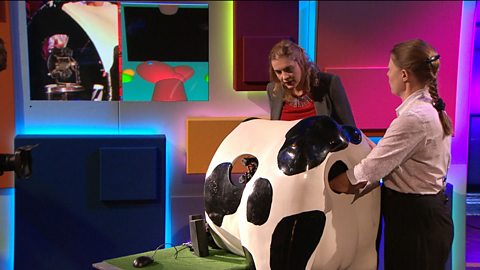ExoMars Rover Engineer Abbie Hutty, from Airbus Defence and Space, explains how the Mars Rover uses 3D cameras to create a map of the Mars landscape, and onboard software allows it to plot its own route across the surface to avoid craters or large obstacles.
Abbie explains that the Mars Rover needs to autonomously navigate because remote controlling it from Earth would not be practical.
Signals take up to 22 minutes to travel to Mars and so if the controller on Earth pressed the stop button, the Mars Rover would not receive the instruction until it was too late!
Abbie also explains that the Rover has metal wheels because rubber wheels are not allowed to be taken to Mars - the Roverβs mission is to search for life, and rubber is made from trees so could contaminate the samples.
This clip is from The Royal Institute Christmas Lectures 2014.
Teacher Notes
Key Stage 3
Introduction β Explain how an autonomous system can pick up information from the sensors it has and responds to these senses using its programming.
Video questions for pupils:
1. How does an autonomous robot sense its environment? What sensors would a robot need to function in a particular environment?
2. How does an autonomous robot such as the Mars Rover make decisions when its controllers are so far away and the response time is so long?
Activities
1. Write a simple flowchart-based program that allows an autonomous robot vehicle (O) to avoid a collision (X) whilst moving along a table and stop in the bottom right square (E).
a. Assume the autonomous robot vehicle can move in a straight line, only turning left (900) when it hits an obstacle or the table edge.b. The autonomous robot vehicle starts in the left top corner and will move down the table at the start.
| O | X | |||
|---|---|---|---|---|
| X | X | |||
| X | X | |||
| X | X | |||
| X | E |
2. See if your flowchart-based program works on the table after the obstacles have moved to a different location
| O | X | |||
|---|---|---|---|---|
| X | ||||
| X | X | |||
| X | X | |||
| X | X | E |
*teachers can give different tables of obstacles to different pupils / classes.
3. What can be modified on your program or the specifications that will help the autonomous robot vehicle always get to the end?
Key Stage 4
Additional material:
1. Using the information from the previous KS3 tasks, write a program using a programming language or your choice that systematically moves the autonomous robot vehicle over the table to identify every obstacle on the table, storing this data in an array.
| O | X | |||
|---|---|---|---|---|
| X | X | |||
| X | X | |||
| X | X | |||
| X | E |
*teachers can give different tables of obstacles to different pupils / classes.
2. Modify your program so that a second autonomous robot vehicle can traverse the table without hitting any of the obstacles.
Curriculum Notes
These clips will be relevant for teaching Computing, ICT and Computer Science at KS3 and GCSE/KS4 in England, Wales and Northern Ireland and 2nd Level and National 4/5 in Scotland.
The topics discussed will support OCR, Edexcel, AQA,WJEC GCSE in GCSE in England and Wales, CCEA GCSE in Northern Ireland and SQA National 4/5 in Scotland.

More from The Royal Institute Christmas Lectures 2014:
Feedback loops. video
Professor Danielle George demonstrates what feedback loops are by asking a child to match the note that she plays on a swanee whistle.
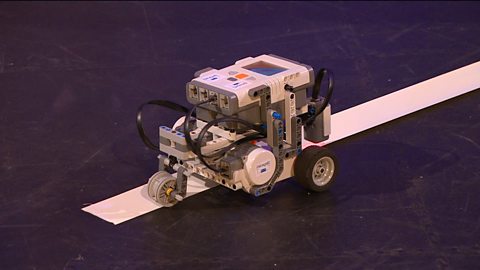
How does a digital camera work? video
Professor Danielle George explains how a digital cameraβs CMOS sensor captures an image, using balls and buckets to represent photons, electrons and capacitors.

How LED screens work. video
Professor Danielle George explains how an LED screen works, showing how the individual LEDs are controlled by switches.
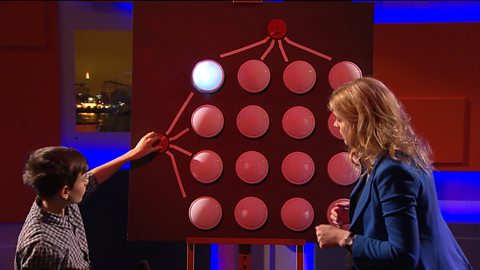
How robots can work together in a swarm. video
Paul Beardsley from Disney Research Zurich explains how the 50 pixelbot robots work together in a swarm to create animations.
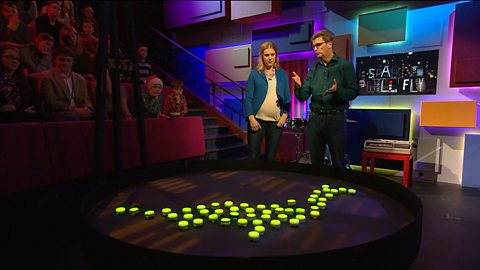
Solving a puzzle cube by smartphone. video
Professor Danielle George explains how a smartphone and mechanical arms made of bricks can solve a puzzle cube in less than five seconds.
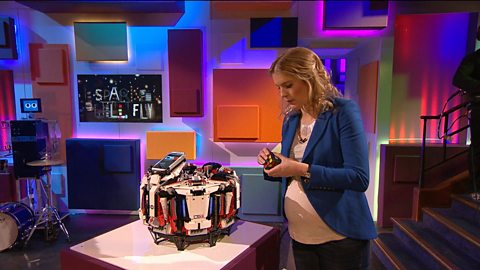
What can 3D printing be used for? video
Professor Danielle George explains how 3D printing works and demonstrates an object being printed in real time.
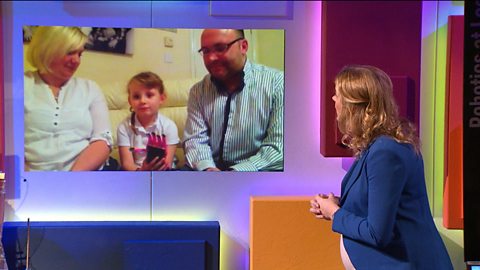
Touching virtual objects. video
How haptic technology allows you feel things that arenβt really there. Professor Danielle George demonstrates using a βhaptic cowβ.
